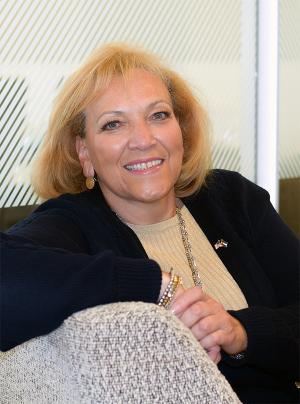COLTT Q&A: Angie Paccione
Gov. Jared Polis appointed Angie Paccione as the executive director of the Colorado Department of Higher Education (CDHE) in January 2019. Since then, she already has made her mark on the agency, shepherding key higher education bills through the General Assembly and making progress toward the state’s goal of reaching 66 percent attainment by 2025.
She has more than 20 years of experience in secondary and postsecondary education, having worked as a teacher, coach and administrator at Smoky Hill High School in Aurora before earning a Ph.D. in education and human resource studies from Colorado State University. Paccione then served on the CSU faculty for nine years as a teacher educator in Project Promise, a nationally recognized program of excellence in teacher preparation for mid-career professionals.
Paccione left higher education to pursue public service and was elected to two terms in the Colorado House of Representatives (2003-07), rising to become house majority caucus chair. She served on the Education Committee during all four years in the Legislature, helping guide the education environment for the state.
From 2007 to her appointment as CDHE executive director, Paccione worked for Verus Global, specializing in leadership development, diversity and inclusion, talent development and change management.
In August, she’ll be the keynote speaker at the Colorado Learning and Teaching with Technology (COLTT) Conference at CU Boulder, where she’ll express her vision for the department and how technology use in education advances the agency’s goals.
1. What motivated you to take this job?
In my previous position as a corporate trainer, I had only one bad day in 12 years. I wasn’t planning on leaving that job, but when the governor called and asked me to apply to serve in his cabinet, I jumped at the opportunity.
My current role requires experience in K-12, higher education, industry and government, and I’ve had the privilege to lead in all four areas. The directorship seemed like the perfect way to give back to our state and forge new partnerships among all these important domains.
2. The state has set a goal of reaching 66 percent attainment by 2025. How do you plan to get there?
First, we have to recognize that this is an economic imperative. Industry researchers tell us that 75 percent of jobs now require a certificate or degree. To keep our economy humming, we’ll need to hit that 66 percent mark and go even higher.
Right now we’re sitting at 56.9 percent, so we have a little under 10 percent to go. We reach this goal in two main ways: 1) by focusing on completion and 2) erasing equity gaps for our students of color.
I know the CU system has launched several programs that connect students with mentors and coaches throughout their education — that kind of wraparound service often means the difference between debt and a degree. We also must drastically increase the number of students of color who enroll in our colleges and universities and support them across the finish line. Our students — young and old, urban and rural — are eager to learn and work hard, they just need opportunity. By working together and being committed to their success, we can meet this goal.
3. You are speaking at COLTT in August. How do technology and innovation play a role in achieving the statewide goal?
Technology in education will play an enormous role. We hosted our first Colorado Open Educational Resources (OER) conference last month, and I was blown away by what campuses are already doing and what they can achieve with additional support.
As a former teacher, I’m especially excited about what technology means for teaching and learning. A good portion of Colorado students fall outside that “traditional” label and are coming back to the classroom after years in the workforce. We have an obligation to adapt our models for these students to attract and retain them through completion.
Beyond the academic support, technology can help us contain costs and make college more affordable. OER alone can save students thousands of dollars a year on textbook costs. And with smarter, better software solutions, institutions can cut down on licensing expenses and pass those savings onto students. I’m calling on faculty to continue to be innovative with technology and practices so we can bring down costs and encourage more Coloradans to pursue — and complete — postsecondary education.
4. What are some of the coolest technology innovations you’ve seen so far?
I’m a huge fan of Colorado Community College Online’s Z Degree program, which is entirely OER. That means learning materials are free throughout a student’s college career!
As a former education professor, I was excited to hear that the University of Colorado Colorado Springs program offers a Teaching Online Certificate to bring tech into pedagogy; modernizing our teaching practices is so important for connecting with the younger generations. I’m certainly eager to learn more at the COLTT Conference.
5. What are some priorities for the upcoming year?
Last year we knocked down many barriers within our higher education system, like making sure all concurrent enrollment credits earned in high school transfer to every state institution. We also granted in-state financial aid to our undocumented students.
Next year, look for us to tackle industry credentials, badging, and alternative ways to demonstrate knowledge and competencies. We’re also kicking off a statewide tour of Colorado institutions, so I’ll be visiting all four CU campuses soon!


